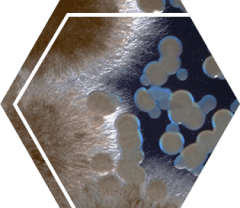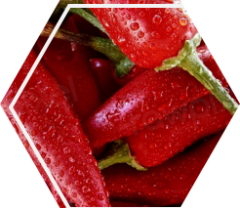
Materials related to dairy and food production.

In this high school task, students explore the food ecosystems of two samples of yogurt with different bacteria to figure out which types are harmful and then explore the environmental conditions that allow harmful and less harmful bacteria to thrive. This is the high school version of the middle school Food Fermentation task. This task intends to elicit student learning of the following NGSS dimensions:
Disciplinary Core Ideas
In this high school task, students are introduced to bioreactors, a new technology that helps farmers reduce nitrates in their agricultural drainage water. A farmer, Caroline, installs two bioreactor systems on her farm, one with and one without a gate in the outlet. Students help Caroline figure out which option she should recommend to other farmers by doing calculations with sensor data to compare the total number of nitrates exiting each bioreactor system. Next, they use this data to decide whether to recommend gates or no gates in bioreactor systems, drawing a model to help Caroline explain the recommendation, including how it will increase the sustainability of Caroline’s farming practices. This task intends to elicit student learning of the following NGSS dimensions:
Disciplinary Core Ideas


In this middle school task, students develop an explanation for how one organism’s (lactobacillus) population growth in an ecosystem may cause the population growth of other organisms in the same ecosystem to decrease. The ecosystem students explore is food. This task intends to elicit student learning of the following NGSS dimensions:
Disciplinary Core Ideas



NGSS Design Badge
Awarded: May 6, 2024
Awarded To: Relevant Classroom/Vivayic: Media Mayhem


In this high school task, students use models and data to explain why lactose intolerant people experience lots of gas, bloating and diarrhea when they eat certain dairy products. Here, students explore models of lactose-tolerant and lactose-intolerant people to see how the inputs, outputs, and processes of each person’s digestive systems affect how they function to process dairy products. They then develop their own comparative model to explain why only lactose intolerant people experience these painful symptoms. At the end of the task, students examine new data to recommend what types of dairy products lactose intolerant people might eat to cause less painful symptoms. This is the high school version of the middle school More Cheese, Please task. This task intends to elicit student learning of the following NGSS dimensions:
Disciplinary Core Ideas
In this middle school task, students use models and data to explain why lactose intolerant people experience lots of gas, bloating and diarrhea when they eat certain dairy products. Here, students explore models of lactose-tolerant and lactose-intolerant people to see how the inputs, outputs, and processes of each person’s digestive systems affect how they function to process dairy products. They then develop their own comparative model to explain why only lactose intolerant people experience these painful symptoms. At the end of the task, students examine new data to recommend what types of dairy products lactose intolerant people might eat to cause less painful symptoms. This task intends to elicit student learning of the following NGSS dimensions:
Disciplinary Core Ideas
NGSS Design Badge
Awarded: Jun 28, 2024
Awarded To: Postgame Analysis

Join us online to receive occasional communications from The Center. Unsubscribe anytime, your information will not be shared.